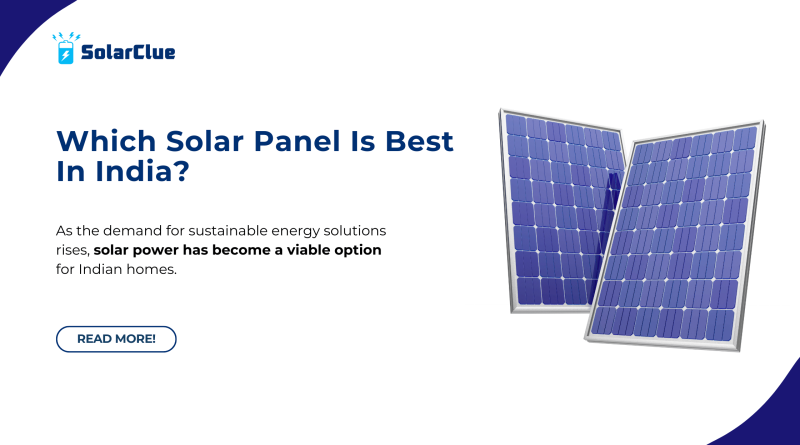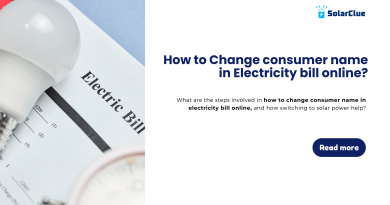Which Solar Panel Is Best In India?
As the demand for sustainable energy solutions rises, solar power has become a viable option for Indian homes. This guide will help you navigate through various solar panel technologies, understand their benefits and limitations, and select the best solar panel for your needs.
Table of Contents
- 1 Understanding Solar Panel Technologies
- 1.1 Monocrystalline Solar Panels
- 1.2 Polycrystalline Solar Panels
- 1.3 Thin-Film Solar Panels
- 1.4 PERC Solar Panels
- 1.5 Efficiency and Performance in Indian Conditions
- 1.6 Durability and Lifespan
- 1.7 Cost Analysis
- 1.8 Suitability for Indian Climate
- 1.9 Comparison of Leading Solar Panel Brands in India
- 1.10 Factors to Consider When Choosing a Solar Panel
- 1.11 How to Install Solar Panels on Your Roof
- 1.12 Conclusion
- 1.13 FAQ Section
- 1.14
Understanding Solar Panel Technologies
Monocrystalline Solar Panels
Monocrystalline panels are made from a single crystal structure, known for their high efficiency and sleek appearance.
- Efficiency: 15-20%
- Durability: Long-lasting with a lifespan of 25+ years
- Cost: Higher than other types
- Suitability: Excellent for areas with limited space due to high efficiency
Polycrystalline Solar Panels
Polycrystalline panels are made from multiple silicon crystals, which makes them less efficient but more affordable.
- Efficiency: 13-16%
- Durability: Slightly less than monocrystalline, but still robust
- Cost: More affordable
- Suitability: Good for larger installations where space is not a constraint
Thin-Film Solar Panels
Thin-film panels are created by depositing one or more thin layers of photovoltaic material on a substrate.
- Efficiency: 10-12%
- Durability: Less durable, shorter lifespan
- Cost: Lowest among all types
- Suitability: Ideal for large spaces and low-weight installations
PERC Solar Panels
Passivated Emitter and Rear Cell (PERC) technology enhances the efficiency of solar panels by adding a layer that reflects light back into the cell.
- Efficiency: Higher than standard monocrystalline and polycrystalline panels
- Durability: Comparable to monocrystalline
- Cost: Slightly higher than traditional panels
- Suitability: Suitable for residential installations seeking higher efficiency
Bifacial Solar Panels
Bifacial panels can capture sunlight from both sides, increasing overall energy output.
- Efficiency: Up to 27% higher than single-sided panels
- Durability: High durability with double-sided exposure
- Cost: Higher upfront cost
- Suitability: Best for installations where ground reflection or rooftop reflection can be utilized
Efficiency and Performance in Indian Conditions
Considering India’s diverse climate, it’s crucial to choose solar panels that perform well under high temperatures and varying weather conditions. Monocrystalline and PERC panels typically offer the best efficiency in hot climates.
Durability and Lifespan
Durability is key for long-term investment. Monocrystalline, polycrystalline, and bifacial panels are known for their robust lifespan, often exceeding 25 years with proper maintenance.
Cost Analysis
While monocrystalline panels are the most expensive, they offer higher efficiency, which can be cost-effective in the long run. Polycrystalline and thin-film panels are more affordable but may require more space to meet the same energy needs.
Suitability for Indian Climate
India’s high temperatures and potential for dust accumulation make it essential to choose panels that can withstand such conditions. PERC and bifacial panels are particularly suited for these environments.
Comparison of Leading Solar Panel Brands in India
Tata Power Solar
- Efficiency: High
- Warranty: 25 years
- Customer Reviews: Excellent
Vikram Solar
- Efficiency: High
- Warranty: 25 years
- Customer Reviews: Very good
Waaree Energies
- Efficiency: Moderate to high
- Warranty: 25 years
- Customer Reviews: Good
Adani Solar
- Efficiency: Moderate
- Warranty: 25 years
- Customer Reviews: Good
Luminous
- Efficiency: Moderate
- Warranty: 25 years
- Customer Reviews: Satisfactory
Factors to Consider When Choosing a Solar Panel
Roof Orientation and Space
Ensure your roof has adequate space and the right orientation (typically south-facing in India) for optimal sunlight exposure.
Energy Consumption
Calculate your household’s energy consumption to determine the size and number of panels required.
Government Incentives
Research available government incentives and subsidies that can reduce the overall cost of your solar installation.
Payback Period
Consider the payback period by comparing the initial investment with the expected savings on your electricity bills.
| Type | Efficiency | Durability | Cost | Best For |
|---|---|---|---|---|
| Monocrystalline | 15-20% | 25+ years | High | Limited space, high efficiency |
| Polycrystalline | 13-16% | 20-25 years | Moderate | Larger spaces, budget-friendly |
| Thin-Film | 10-12% | 10-20 years | Low | Large areas, lightweight |
| PERC | 18-22% | 25+ years | Moderate | High efficiency, residential use |
| Bifacial | Up to 27% | 25+ years | High | Maximize ground/roof reflection |
How to Install Solar Panels on Your Roof
1. Site Assessment: Evaluate roof condition, orientation, and shading.
2. System Design: Plan the layout and electrical connections.
3. Installation: Mount the panels and connect to the grid.
4. Inspection and Maintenance: Regular checks to ensure optimal performance.
Conclusion
Selecting the best solar panel for your Indian home involves considering various factors such as efficiency, durability, cost, and climate suitability. By comparing leading brands and understanding the different technologies, you can make an informed decision that will benefit you in the long run.
Here at SolarClue®, we offer a smart, practical, and “beautiful” solution. You will be answered for all the questions related to Solar.
We provide all kinds of brands that are the Best Solar panels in India.
If you are the one who is planning for the solar power system. Don’t hesitate to contact our team!
Looking forward to empowering you with solar energy, just like hundreds of our other clients!
FAQ Section
1. What is the best type of solar panel for Indian homes?
Monocrystalline and PERC panels are generally the best for efficiency and durability.
2. How long do solar panels last?
Most solar panels have a lifespan of 25-30 years.
3. Are there government incentives for solar panel installations in India?
Yes, the Indian government offers various subsidies and incentives to promote solar energy use.
4. How much roof space do I need for solar panels?
It depends on your energy consumption and the efficiency of the panels you choose. A typical Indian home may need 100-200 sq. ft. for a 1 kW system.
5. What maintenance do solar panels require?
Regular cleaning and annual inspections are recommended to ensure optimal performance.




